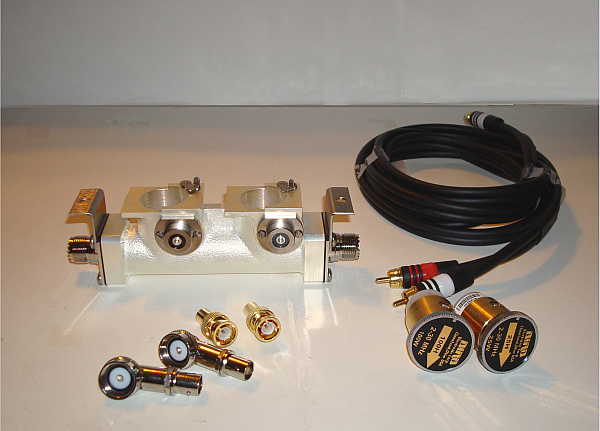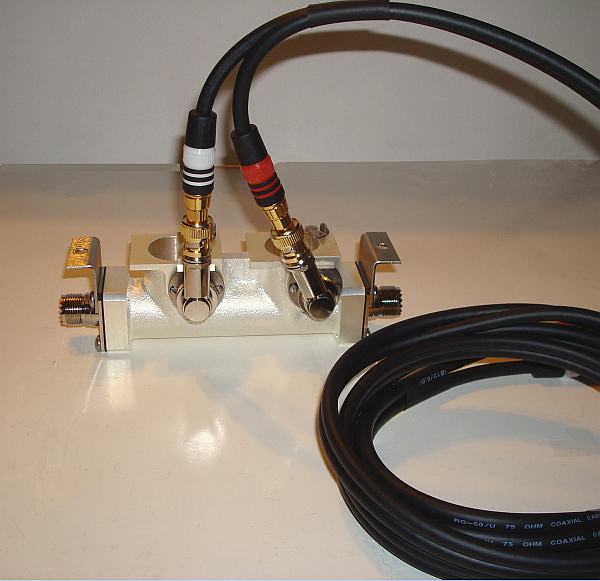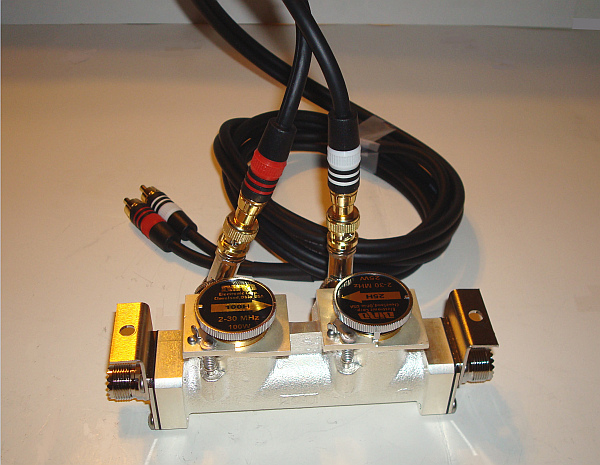 Index
Index
- Bird Line Sections
- Comparisons
- Contact Information
- Custom Meter Scales
- Customizing MB-1
- Documentation
- Downloads
- Expansion Features
- Evaluating Analog Meters
- Evaluating Couplers
- FAQ
- Features
- Generic Meter and RF current Measurements
- Hardware Diagnostics
- Interfacing your own Analog Meters
- Interfacing your own Couplers
- Multi-Coupler Display Feature
- Prices
- Programming MB-1
- Projects
- Quick Reference Guide - Menus
- Quick Reference Guide - Switches and LEDs
- Recent Site Updates
- Reviews
- Specifications
- Simulator
- Troubleshooting
- Useful Links
- Using Different Couplers
- Utilities
- Videos
Interfacing a Bird Dual Line Section to your MB-1
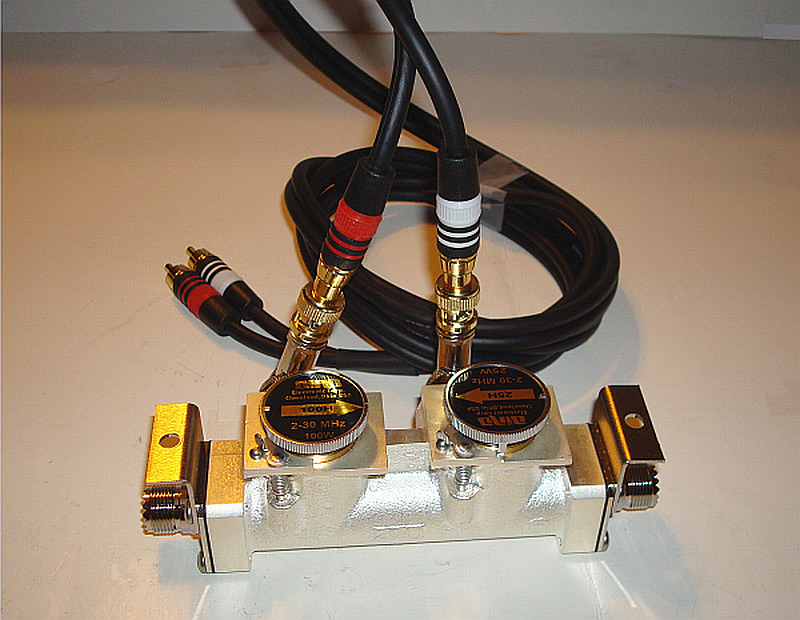
Interfacing a Bird Dual Line Section MB-1:
These notes assume that you will be using a stand-alone Bird Dual Line section. The same procedure applies if you are using two stand-alone Bird Single Line sections in tandem, including two line sections from two Bird meters. If you are using the line sections from one or more Bird meters, you must first disconnect the DC cable from the meter movement since MB-1 needs to see the open circuit voltage from each Bird element.
The DC output of the two Bird line sections are connected to the MB-1 FWD and REFL coupler ports (coupler 1 - 4) using dual RCA cable. Connectors and cables are readily available that make this a simple procedure (see the pictures below).
You do not need to have two identical Bird elements. In this example, we used a 100H (100 watt) HF slug and a 25H (25 watt) HF slug. The following guidelines apply however: The FWD element should have a rating of 100 watts or less to provide adequate sensitivity. The REFL channel should be the more sensitive of the two slugs (to ensure that the REFL channel calibration, using the trim pot, is within range. The difference in sensitivity can be minimal. As mentioned elsewhere, the 25H slug, while slightly more sensitive than the the 100H slug, has no significant advantage over the 100H slug in terms of sensitivity. Therefore, two 100H slugs could have been used in this example with comparable results. But following the above guideline, we used the 25H for the REFL channel and the 100H for the FWD channel.
For the Bird Single Line section, we pointed out that if you are doing your own calibration, the single slug that you use does not even need to be within specs (as long as it is stable). While for the Bird Dual Line section, you can likewise obtain very accurate FWD power measurements, even with an out-of-spec slug, to ensure FWD/REFL power tracking, which is important for maintaining stable SWR measurements as a function of power, the two slugs should be within specs. (Again, the two slugs do not have to have the same power rating).
The MB-1 coupler calibration trim pot for the FWD port should be set to its maximum sensitivity (full CW position). If you are doing your own calibration, this will give you the best resolution since the Bird line section will never exceed MB-1's maximum input of 6.14 volts (and therefore never saturate the MB-1 input circuitry). Furthermore, if you are using the updated MeterBuilder OEM calibration table that contains the Bird calibration table, the trim pot must also be set at its maximum value since that is the condition under which the calibration table was generated.
The trim pot for the REFL port will have to be adjusted during calibration as described in section 6 in the User Manual. This is a single adjustment at a single power level. You should use the more sensitive of the two Bird elements for the REFL channel. This will guarantee that the REFL channel calibration pot will be within range (less than the maximum CW (most sensitive) setting when you adjust the trim pot. You can easily see which element is more sensitive by applying power through one element at a time with its DC output connected the coupler 1 FWD port (which contains the MB-HF1 table). The element with the highest power FWD reading is the more sensitive. Alternatively, you can also measure the DC output voltage from each element with a digital voltmeter with power applied through both elements and with both elements oriented to read FWD power. Of course, the element with the higher DC output voltage is the more sensitive.
The Bird Dual Line Section, when equipped with two elements, provides full MB-1 functionality just like any other coupler with both a FWD and REFL port (e.g., simultaneous FWD and REFL power, SWR, Delivered (net) power, etc.). Therefore, there are no operational restrictions as there were when using the Bird Single Line section.
The photos below show one method of connecting the two DC connectors from the Line Section to the MB-1 FWD and REFL coupler ports. A BNC-to-RCA adapter is connected to each DC connector on the Bird line section. A dual RCA cable is then used to connect the Dual Line Section to MB-1 in the normal manner.
Calibrating the Bird Dual Line Section with MB-1:
The Bird Dual Line section is no different than any other two port coupler. Therefore the calibration instructions in the User Manual apply.
You can also download the updated MeterBuilder OEM coupler table, which contains the calibration table for the 100H Bird element. While this eliminates the need to do a custom coupler calibration, you will still need to adjust the REFL channel trim pot as described in the User Manual.
However, as with the Bird Single Line Section, you will always get the most accurate results doing a custom calibration with an accurate reference. As pointed out in the discussion of the Bird Single Line section, if you do not have an accurate reference wattmeter, you can do the calibration with the Line Section in series with the MB-HF1 coupler. The MB-HF1 coupler, in combination with a digital multimeter can provide an accurate reference.
|
|
|
|
|
|
Some A/B Measurement Comparisons between the MB-1/Bird Elements and the Measurement Reference
The measurements below were taken after calibrating the Bird elements using the Alpha 4510 as the reference. Any accurate reference can be used including the MB-HF-1 coupler in combination with a digital multimeter. The Alpha is left in line below so that the tracking between the MB-1 and the measurement reference can be checked.
7-Segment LED Configuration:
| Top Left - Instantaneous (Forward) Power | Top Right -SWR |
| Bottom Left - Selected Coupler | Bottom Right - Selected Band |
For low SWR values at low FWD power levels (less than 4 watts), the DC
voltage from the REFL BIRD slug was not adequate to provide stable SWR
measurements. We therefore made use of the MB-1 "Min PWR for Valid SWR"
feature to prevent the SWR from being calculated for power levels lower
than 4 watts. You can see this in the first two pictures
below.
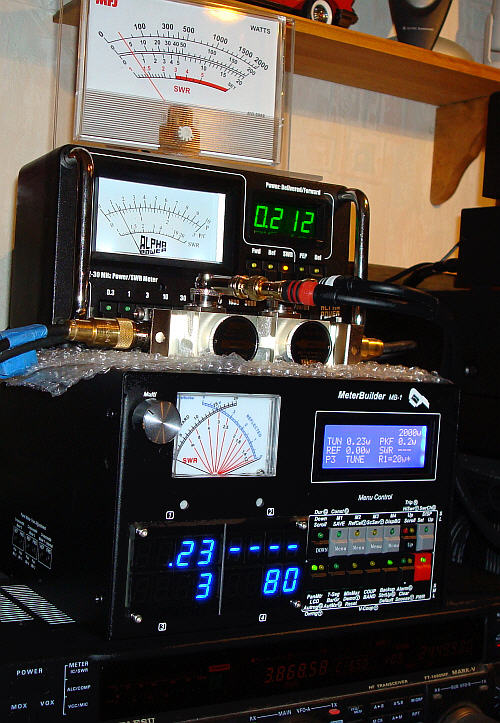 |
 |
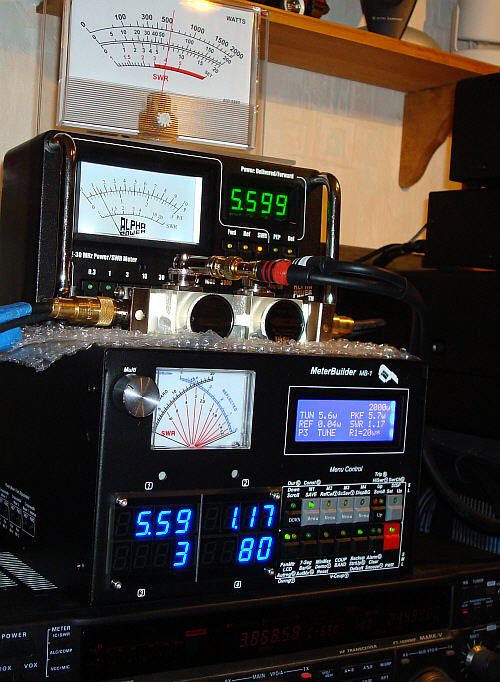 |
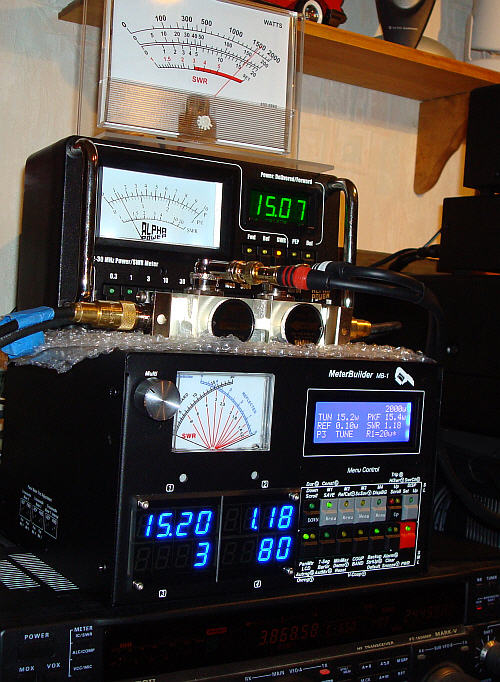 |
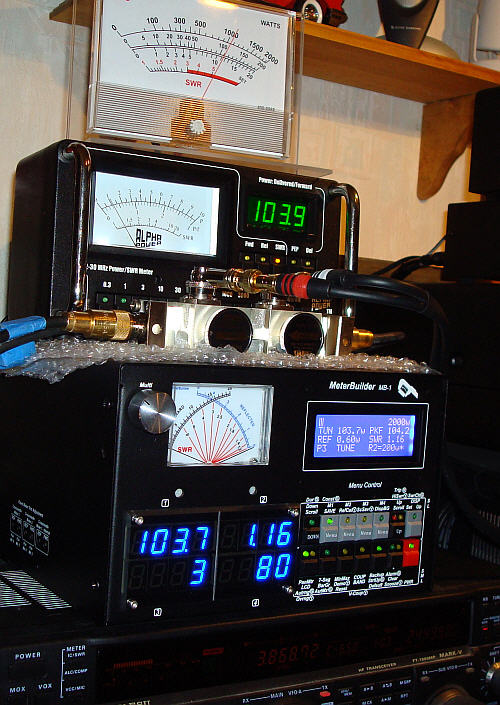 |
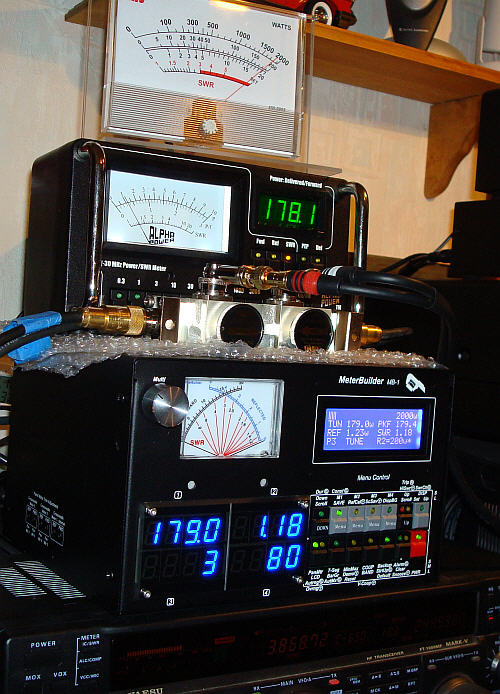 |
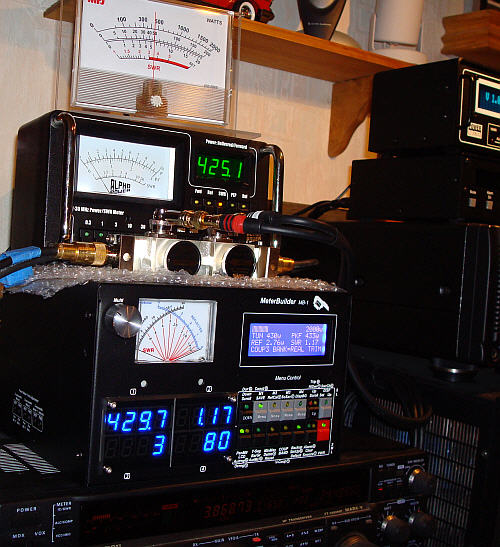 |
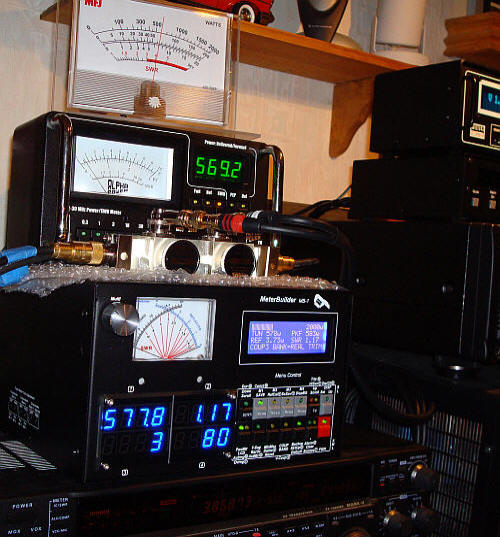 |
 |
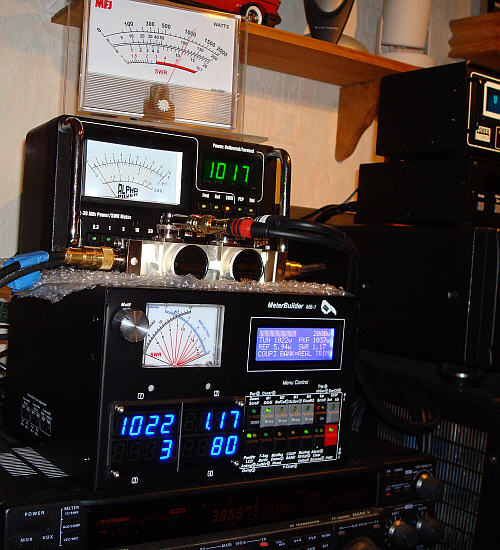 |
